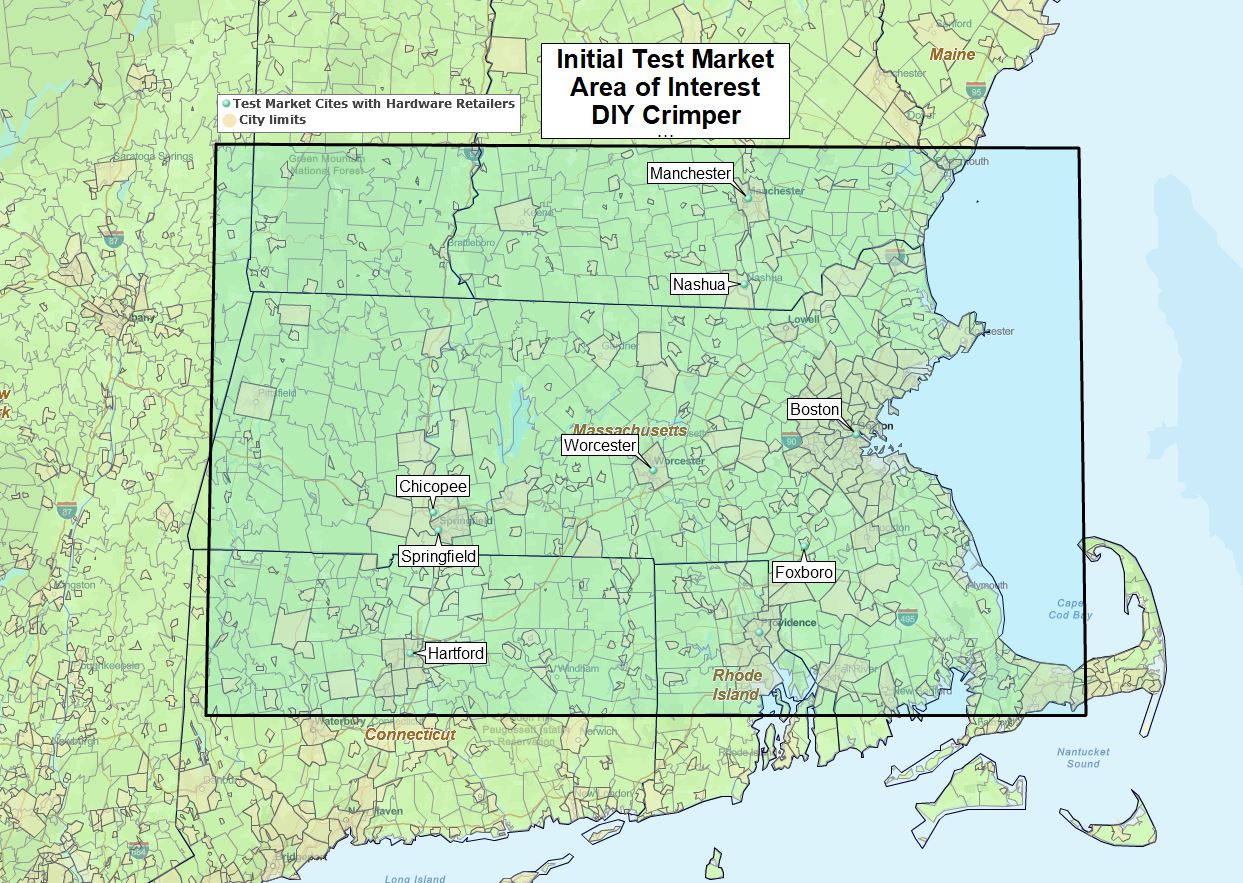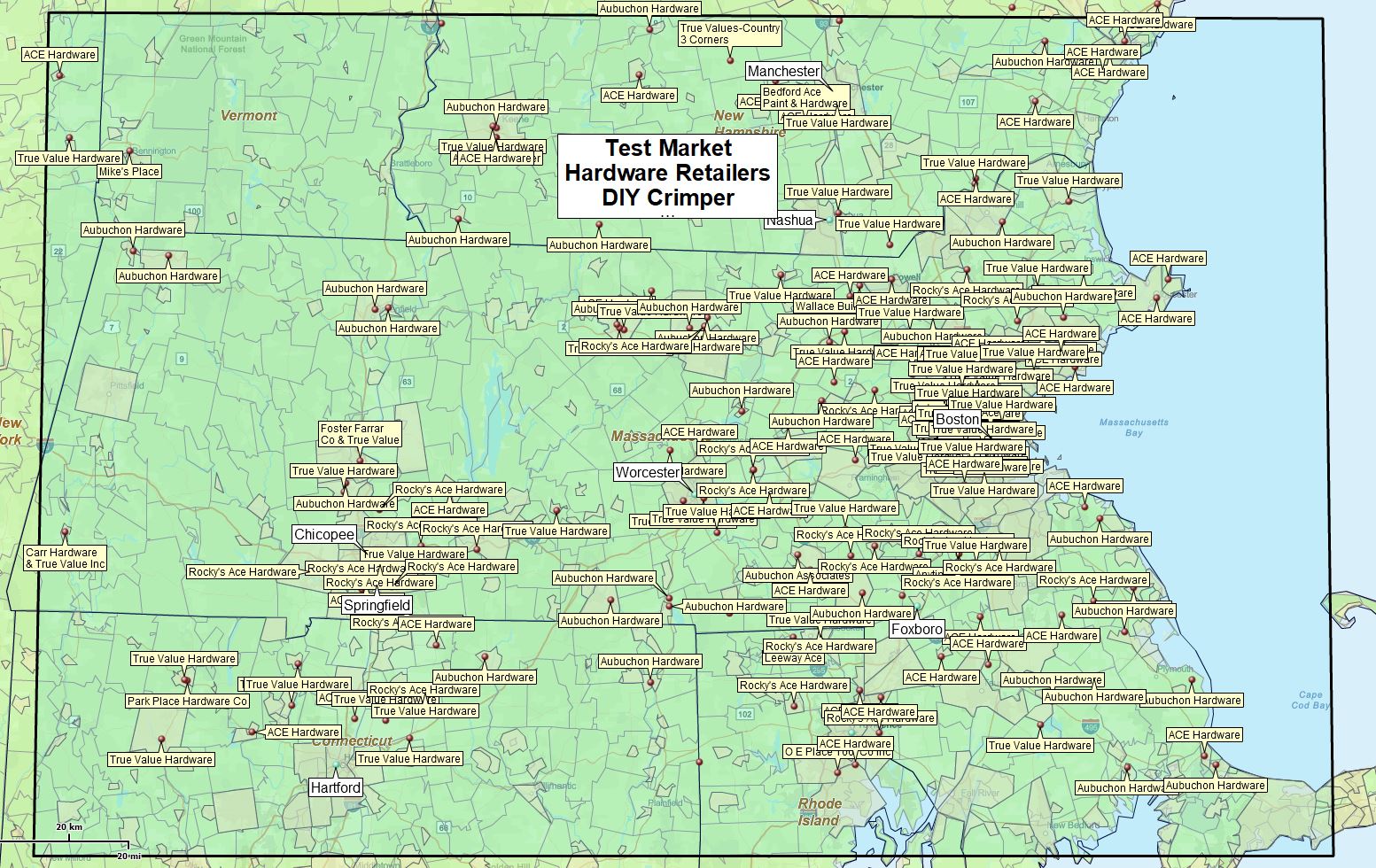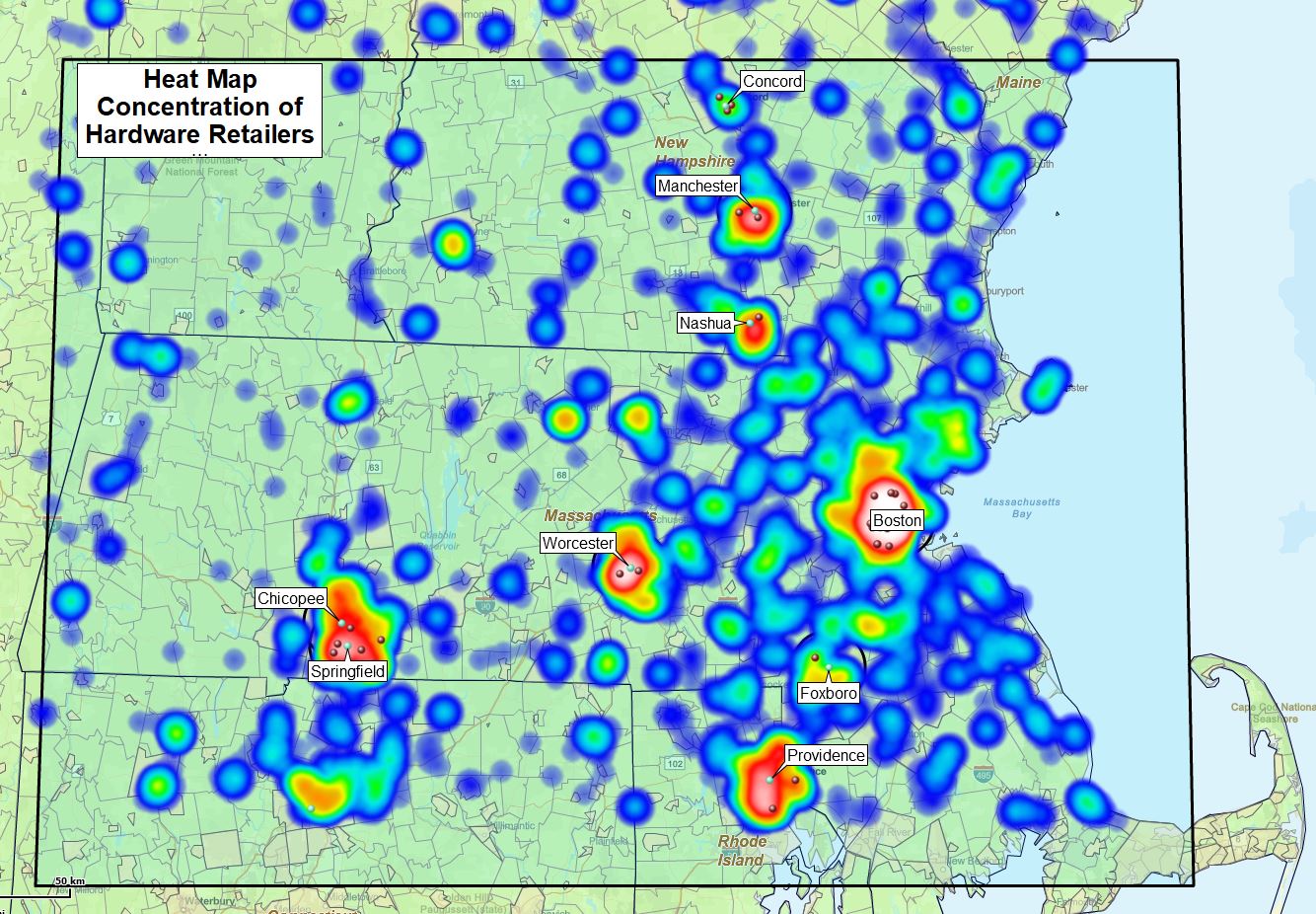Products and services don’t generally sell themselves. New products created with specific end-users in mind require market research to establish target markets. It is important to identify where most of the end users are located. Can we find them on a business map and focus our sales efforts on the areas with the highest potential?
Define the Target Market’s Geographic Area of Interest
Selecting a limited geographic area of interest for an initial market study is a great starting point. Let’s say you are a New England-based inventor who has created a patented plumbing crimping tool for the in-home Do-It-Yourself (DIY) market. Your tool was a hit in pre-release market tests. Multiple hardware stores and big box stores have shown serious interest.
You’ve decided that middle New England is the best place for the initial market release. Create a map of the five New England states and draw a rectangle representing the central area of interest.

A test area of interest for market analysis.
Search for Potential Customers by Area & Industry
Now, you must search for the hardware retailer chains interested in reselling your product. Those include Ace, Aubuchon, Lowes, True Value chains, and some independent hardware stores. You run the search for Business Listings by industry and business name in your rectangle area of interest.
Business Listing searches can be filtered to keep your customer list focused and control procurement costs. A first pass at the total count of candidate retailers for the designated area of interest is about fifteen hundred stores. Filters in the query reduce this to 248 stores – plenty for developing a test market for the DIY Crimper at retail.

Test market retailers imported as business listings using MapBusinessOnline.
Find Cities with the Highest Concentration of Potential Customers
The first manufacturing order release of DIY Crimpers was for one thousand units. Not enough to supply all 248 stores. You create a heat map to focus on the cities with the highest hardware store concentration. The heat map depicts zones with the highest count of hardware stores in each area.

Heat map analysis applied to the New England rectangle of hardware retailers reveals eight key cities.
Launch a Targeted Campaign Across the Test Market
You also want to get a list of specific stores in the target cities to focus your sales efforts. Run a spatial query against each of the eight highest concentration cities at once, searching for the hardware stores within a radius of 5.25 miles from the city center. This nets a total campaign count of 35 hardware retailers.
Spatial search results across eight focus cities simultaneously, netting 35 retailers for the initial campaign.
The target list of 35 stores includes the addresses and phone numbers you can now pass on to your team, who will distribute the product. Additional business listing data fields available for each sales lead include:
- Business name.
- Revenue estimates.
- Employee count levels.
- Email addresses where available.
- Contact title.
- Primary or secondary contacts.
- Location type – headquarters, branch, or franchise.

List of test market hardware stores with contact information and firmographic data.
Conclusion
Using business mapping software, you identified the location of the most appropriate target businesses across your critical area of interest in New England. You used a heat map to expose the highest concentrations of critical accounts by city. You refined your customer list, narrowing the trial campaign targets to 35 hardware stores in eight key New England cities. This allowed you to roll out your campaign in the eight cities, place the inventory in trial locations, and start monitoring results.
Mapping software with business listings provided tools for developing target markets based on actual customer concentrations and strategic product placement. Business maps – highlighting the road to success.
